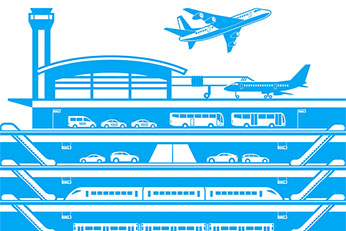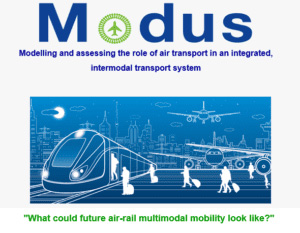Seamless passenger journeys call for the optimization and alignment of different transport systems whether by air, rail, road, or sea. Improved multimodality across the European transport network will help passengers make the best choices in the future.
The Modus project modelled a seamless door-to-door multimodality and passenger experience to evaluate the impact of an improved joint air-rail transport system for a variety of different passenger types. By deploying passengers’ modal choice decisions based on a combination of airport and railway station connectivities, city archetypes, and respective catchment areas, the model was adjusted to individual passenger itineraries in the air-rail network. As a further contribution, the model considered various future scenarios that depict different potential development pathways of air-rail mobility, including a significant short-haul shift from air to rail, traffic growth with strong technological support, or a move towards a more decentralised, remote, and digital mobility. It sought to identify future drivers for passenger demand, and supply of, future mobility and how these impact passengers’ modal choices.
The Modus solution assessed the impact of passenger choice on capacity, predictability, and the environment, across different scenarios and for multimodal journeys. It enabled the development of multiple scenarios of future mobility pathways, taking into account new regulatory frameworks and environmental standard, or new business models, and covering a time horizon of 2030 and beyond. This can provide useful support for policy makers as well as transport service providers in shaping future multimodal mobility. In particular, it brings a better understanding of the impact of air and rail as substitutes and provides insights into possible development pathways for European mobility.
Benefits
- Models the impact of multimodality
- Models door-to-door journey requirements
- Models future mobility pathways






